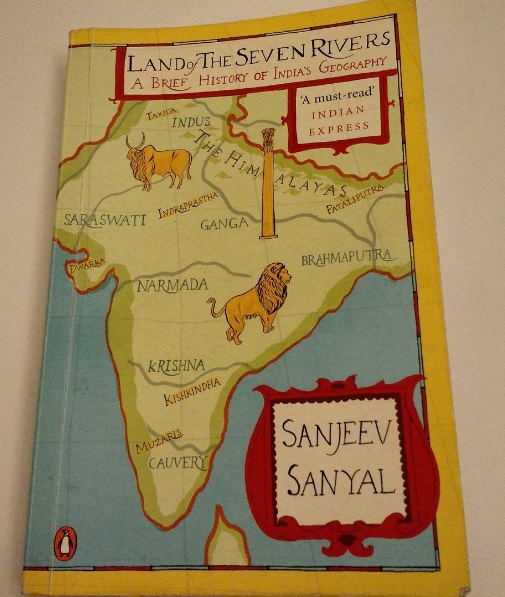Sanjeev Sanyal
Geography through the lens of history, the other way, or both! Whichever way one interprets it, the perspective it offers simply by traversing the length of time from “Gondwana to Gurgaon” is quite amazing.
In trying to unravel the broad contours as well as nuances of an ancient civilisation that continues to thrive, the author covers varying domains – beginning with genetics and tectonics and continuing on to trade, politics, cartography and so on. As the title suggests, the specific area around the seven rivers gets most of the focus. One reason is probably that, the events and transformation that this region has witnessed is relatively much higher than the rest of the country. But in many contexts, the author has given hat tips to other relevant regions/kingdoms. e.g. Vijayanagara, Chola, Muziris. He has also covered population influx and exodus at different points in history, and the influences of both, in India as well as in other geographies.
In terms of history, while it might be arguably selective, the author does cover the Harappa civilisation, the movement of civilisation from the Indus to the Gangetic plains, the Mauryas, Guptas, the dynasties preceding the Mughals, different emperors of the Mughal empire, the British and even the politics and policies of contemporary India that continues to create new contours. It is fascinating to see the change in GDP (global share) and population growth through history, and understand the reasons behind them.
The author seems to have traveled quite a bit, and the personal anecdotes about various historically important sites are a very good touch, lending authenticity and character. One other thing I was really impressed by is the absolutely accurate (from what I have seen around me in Bangalore) description of a cycle that a village goes through as it becomes urban, and gentrifies.
What I liked most was how, through comparisons of events past and present, the author shows the circularity of history. Like the wheel in our national emblem, we have cycles a civilisation goes through – absorbing, rejecting, morphing – and identities it creates for itself and its citizens. I am not a fan of the concept of a nation state, but this book does a great job of giving perspectives on how it exists, and why.

